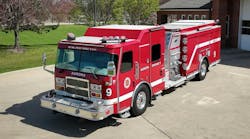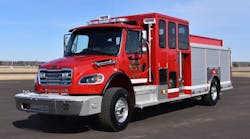As part of my career in the FDNY, my last assignment was to retro-fit the FDNY fleet with Ready Reach Seat Belts, which we have written and talked about extensively. As the Ready Reach Seat Belts have worked so well in the FDNY, there was an idea that perhaps we could retro-fit other fleets, both big and small, with this life-saving technology. However, as of this writing, it appears that this is not going to happen as the seatbelt company has chosen to pursue the new fire truck market exclusively and has given up on the idea of retro-fitting existing fleets. This is truly a sad turn of events that will result in more firefighters losing their lives as they struggle to use the existing seatbelts in their fire apparatus or not being able to use them at all.
Anthropometric data
We have also written and lectured extensively about the firefighter Anthropometric Study conducted under the auspices of the National Institute of Occupational Safety and Health (NIOSH). The Study has just been made public. Two National Firefighter Protection Association (NFPA) committees, NFPA 1901, the fire apparatus standard, and the NFPA committee on turnout gear, already have the information and documents have already been prepared as part of an effort to change those standards to reflect the new anthropometric data. There will be more on this in the coming months as the anthropometric data winds its way through the NFPA standards making process.
One would only have to watch the news or read about recent events to realize that highway fatalities and injuries while using cell phones or texting are occurring with frightening regularity on the nation’s highways to the point of being a national epidemic. I refer to these as incidences, not accidents, as there is nothing accidental about texting while driving. Just as there is nothing accidental about drinking and driving as a decision was made to do it, the same can be said about texting and driving.
Being a little naïve, I thought it would be unthinkable for anyone to operate an ambulance or fire truck while texting or talking on a cell phone. Then I went on YouTube and there are fire apparatus operators and ambulance operators being filmed by onboard cameras texting while driving and talking on a cell phone while driving. While neither behavior is acceptable, texting seems to be the bigger of the two distractions and the more popular, particularly with younger operators.
How many times have you driven “lights and sirens” and have become personally unglued as an inattentive driver crosses your path on the way to a fire or emergency and yet we are doing the very same thing. If you are texting while driving an emergency vehicle, you run a sustainably greater risk of wrecking the vehicle versus a normal civilian operator doing the same thing. It is sad to think that we have those in our ranks who would violate the public’s trust in such a heinous way.
Some states have laws against cell phone use while others do not. For example, although New York has had a law on the books prohibiting cell phone use, a new state law was just passed raising the first-time fine to $150, five points on your driver’s license and after three convictions your license is revoked. I recently completed an emergency vehicle operators course in the Province of Quebec and was shocked to find out that emergency vehicle operators are exempt from the provincial laws governing the prohibition of cell phone use while driving.
What do your state laws say as they relate to driving motor vehicles while using a cell phone in general and what do the laws say specifically about driving an emergency vehicle while using a cell phone? Those are questions that need to be answered. But more importantly, what do your department’s policies state about having cell phones while on duty, using them or driving while using them. Some career departments have a policy of leaving cell phones turned off in department lockers, other departments have banned cell phones onboard apparatus at all times and still others have no written policies at all. Many of those polices were enacted when first responders were taking pictures of the victims we are sworn to protect and serve, not necessarily for texting while driving.
What is your department’s policy about cell phone use? What is the punishment if you get caught? How is the policy enforced? Who enforces the policy? In reality, cell phone use by any driver of any emergency vehicle should be prohibited, period. The punishment is easy – an individual caught talking on a cell phone or texting on a cell phone while driving an emergency vehicle should NEVER be allowed to drive an emergency vehicle again. That’s right, a lifetime ban.
If you are a career engineer, that could result in you being fired or demoted for being unable to perform the functions of your job. Sounds drastic, maybe, but necessary – absolutely. Enforcement should be everyone in the fire department’s responsibility, knowing that if you do not say something and an incident occurs, you could be injured or killed. Fire departments across this country need to enact policy and procedures that will help protect the motoring public and firefighters who ride on their apparatus.






